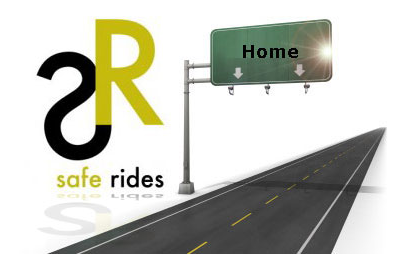By Gary Bethea
By now, TCNJ’s student body is surely aware of the loss of Ryan Alley. Thursday, March 15, Ryan and Michael Krassan’s car struck a tree on route back to Mike’s off-campus apartment. They had been dropped off by a shuttle at the Brower Student Center after spending the night at Havana, a bar in New Hope.

I was in Boston for St. Patrick’s day when I got that ominous text. “Call me.”
Before that, I’d only received those words in an otherwise empty message from my girlfriend and my mother. The former because she loves being melodramatic, the latter because she doesn’t really know how to text. And it’s actually more likely to say “Ball of.”
But from Damien, this was strange. But I called him with no real apprehension. He could hear that I was at a party, and he didn’t want to talk until tomorrow. “It’s nothing serious,” he reassured me. I’m grateful for this lie.
And so it wasn’t until two days after the accident that I found out about Mike and Ryan. There are not many people I’ve met who command more respect and affection from me than Mike. I did not have the pleasure of close friendship with Ryan, but meeting him just once was enough to tell that he was a special person. And so I’m grateful for Damien’s lie because by the time I called him back, at least we knew that Mike was in stable but critical condition. Ryan was not as fortunate, and he passed away on Friday
That Saturday night I walked the brisk streets of Boston alone and turned over in my head, “Why?” If they were intoxicated or too tired, why didn’t Mike and Ryan call someone for a ride back to Mike’s apartment when the bus shuttled them back to campus from New Hope? They are popular students, and the list of volunteers who would have answered is endless. Maybe they didn’t want to bother anyone. Maybe everyone was busy. If only they had had someone else to call…
So why doesn’t TCNJ have a Safe Rides program? Neighboring Rider University does. Nearby Rutgers University does.
Is it because TCNJ lacks the resources to protect its students? The Safe Rides program I’m proposing is based on volunteerism. All the College would have to do is perhaps compensate volunteer lifesavers for their gas money. Besides, we are already allocating a great deal of resources towards sober rides. Stopping them, that is. Anyone who has run sober rides for a fraternity party knows that once a campus police officer identifies you, you’re likely to be harassed throughout the night. One driver told me a certain officer once spat in his face while yelling that he was holding up traffic by “improperly loading passengers” (read: picking up a friend) outside of Phelps Hall. At midnight. When the officer was the only other car on Metzger Drive. And he was going the opposite direction.
Indeed, financial resources seem to be a paramount concern of the college. In a 2009 interview, Joe Hadge, TCNJ’s director of Alcohol and Drug Education Policy, claimed that “finance is one of the big (concerns).” He reiterated, “Who pays for it?” Rider University spends approximately $16,000 a year on their Safe Rides program, which is run by a cab company. Once again, towns across the country run Safe Rides programs on a volunteer basis. But even if the College resisted the hassle of indemnifying drivers (a process Safe Rides US walks you through for free) and employed a system like Rider’s, what’s $16,000 a year against the life of a TCNJ student? Against the personal worth of Ryan Alley? In the end, Joe Hadge balked at endorsing a Safe Rides program.
Is it because TCNJ doesn’t want to encourage drinking? This was another theme of Mr. Hadge’s in 2009, when student journalist Michael Tracy brought the possibility of starting a Safe Rides program forward. But this is misguided. College students will drink. Period. An in-touch administration knows this, and should take whatever actions are necessary to stop these flourishing young people from endangering themselves.
Is it because TCNJ is afraid that this policy will create a kind of moral hazard? Will students become “too drunk to fail” and throw caution to the wind when they’re out and about, and wind up driving drunk anyway once they’re in a less sane state? Unlikely. In the past decades, Safe Rides programs have proliferated around the country, and incidents of DUI arrests have declined since their peak in 1986, despite increasingly strict enforcement. Besides, there is no good evidence that knowing you can count on a ride will encourage you to drink more. Most off-campus TCNJ parties are within walking distance, and it’s easy to spot crowds of partiers in transit on Tuesday, Friday, and Saturday nights. But evidence suggests walking drunk is even more dangerous than driving drunk.
Is it because TCNJ has no responsibility in the matter? The College allows Havana, a bar in New Hope, to plaster the campus’ academic buildings with fliers advertising a shuttle to the bar and back to the College. The administration surely knows that only about half of all seniors live on campus. And they must know the calculus of how students make decisions about how to get home. Sure, if a student has money and the right phone number, they can call a cab. If they have a strong social network, they can bug a friend for a ride. But having a Safe Ride program would alter the calculus of how students make decisions. Of course, in a perfect world, everyone always makes the right decision and does whatever they have to in order to avoid driving tired or drunk. But the more inconvenient the alternatives, the more appealing “Oh, it’s only a short drive, and I’m only a little b-b-buzzed!” becomes. One promising young student is dead. Another is badly hurt. Culpability for this calamity is shared. But surely a considerable portion of the responsibility falls squarely on an administration that believes in shuttling students to a bar, but not shuttling students to their homes.
Finally, perhaps TCNJ doesn’t have faith that its student body is responsible enough to call for a safe ride home. As Mr. Hadge put it, “Will they do that? Can they do that?” If the Rider model, and the model used in townships around the country is any indication, yes they will. Yes they can.
Hindsight is 20/20 and tragedies sometimes write silly policies. I doubt the orange sticker on my sister’s license plate has saved her life too many times. But in this case, it’s clear what needs to be done. Car accidents are the top killer of college aged people, and it doesn’t need to be that way. That’s why I’ll be starting a Safe Rides program at TCNJ, with or without the College’s support. I’ve seen far too many hypermasculine fraternity brothers break down in tears this week not to. But I hope the administration can do the right thing, because they can help make this program more effective.
But what I really need is all of you. I have set up an account and registered TCNJ with Safe Rides US. When you email me at tcnjsaferides@gmail.com, I can add you to this group. Obviously, there is no obligation to run rides at any particular time. You are in complete control. Remember that this is a volunteer service, and will look great on your resume. The organization will also need leadership, and this will help you hone your organizational and leadership skills, while helping save lives and making yourself look good. You can’t lose! Let’s do this for Mike and Ryan, for ourselves, and for our college community.
Written with help from Mike and Ryan’s friends, in memory of Ryan Alley






